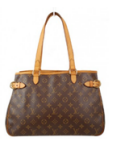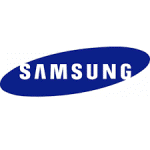Newsletter Issue 94 - December 2016
In this issue:
David beats Goliath
Common law copyright
Patents important to big pharma?
Apple v Samsung news
Ask Dr. Copyright ...
Dear Doc:
I understand that it's sometimes hard to take when someone makes
fun of you, but now I have heard that one of the world's largest
brands, LOUIS VUITTON MALLETIER, S.A. (LVMH) (owners of, among other
brands, Ardbeg, Belvedere, Bodega Numanthia, Cape Mentelle, Chandon,
Chandon Argentina, Chandon Australia, Chandon California, Chandon
China, Chandon do Brasil, Château Cheval Blanc, Château d'Yquem,
Cheval des Andes, Cloudy Bay, Dom Pérignon, Glenmorangie, Hennessy,
Krug, Mercier, Moët & Chandon, Newton Vineyard, Ruinart, Terrazas de
los Andes, Veuve Clicquot, Wenjun, Berluti, Céline, Christian Dior,
Edun, Emilio Pucci, Fendi, Givenchy, Kenzo, Loewe, Loro Piana, Louis
Vuitton, Marc Jacobs, Moynat, Nicholas Kirkwood, Thomas Pink,
Bvlgari, Chaumet, De Beers Diamond Jewellers, Fred, Hublot, TAG
Heuer, Zenith, DFS, La Grande Epicerie de Paris, Le Bon Marché Rive
Gauche, Sephora, Starboard Cruise Services, Cheval Blanc,
Connaissance des Arts, Cova, Investir, Jardin d'Acclimatation, La
Samaritaine, Les Echos, Nowness, Radio Classique, Royal Van Lent)
sued a small Los Angeles company that makes canvas tote bags. What
gives? Can they do that?
Signed,
Dazed and Confused
Dear D&C:

Yes, you heard right. LVMH did bring a trademark and copyright
infringement law suit against a small company called My Other Bag,
Inc. (MOB) that makes canvas totes that say "My other bag..." on one
side, and have graphics showing bags on the other. For reference,
here is the $35 My Other Bag in the suit:
Other Bag in the suit:
And here is the similar $1,810 bag from LVMSA:
According to the federal court, "Louis Vuitton brings claims against
MOB for trademark dilution and infringement under the Lanham Act, 15
U.S.C. § 1125(c); a claim of trademark dilution under New York law;
and a claim of copyright infringement." The judge in the suit said
in his
opinion,
MOB's totes - indeed, its very name - are a play on the classic "my other car . . ." novelty bumper stickers, which can be seen on inexpensive, beat up cars across the country informing passersby - with tongue firmly in `cheek - that the driver's "other car" is a Mercedes (or some other luxury car brand). The "my other car" bumper stickers are, of course, a joke - a riff, if you will, on wealth, luxury brands, and the social expectations of who would be driving luxury and non-luxury cars. MOB's totes are just as obviously a joke, and one does not necessarily need to be familiar with the "my other car" trope to get the joke or to get the fact that the totes are meant to be taken in jest. Louis Vuitton Malletier, S.A. ("Louis Vuitton"), the maker of Louis Vuitton bags, is perhaps unfamiliar with the "my other car" trope. Or maybe it just cannot take a joke."
In a 12 page opinion on January 8, 2016, Judge Furman considered whether MOB infringed trademarks and copyrights, and concluded,
Louis Vuitton is, by its own description, an "active[] and aggressive[]" enforcer of its trademark rights. In some cases, however, it is better to "accept the implied compliment in [a] parody" and to smile or laugh than it is to sue. ... MOB's use of Louis Vuitton's marks in service of what is an obvious attempt at humor is not likely to cause confusion or the blurring of the distinctiveness of Louis Vuitton's marks; if anything, it is likely only to reinforce and enhance the distinctiveness and notoriety of the famous brand. Accordingly, and for the reasons stated above, MOB is entitled to summary judgment on all of Louis Vuitton's claims[.]
Unhappy with that result, LVMH appealed to the Second Circuit
Court of Appeals. On December 22, 2016, the
decision of the appellate court took 6 pages to conclude: "UPON
DUE CONSIDERATION, IT IS HEREBY ORDERED, ADJUDGED, AND DECREED that
the judgment entered on January 8, 2016, is AFFIRMED." In other
words, in this case, the little guy (or, actually, gal, since MOB is
the brainchild of
Tara Martin
who looks a lot like Ivanka what's-her-name, but I digress...)
So, in the end, after both companies paid lawyers bags full of
money, MOB got to keep selling its $35 sacks, and LVMH got to keep
selling its $1,800 sacks (guess which Ivanka would buy) and all is
right in the world, right?
Do you have a fun product that is causing a gigantic multinational
corporation to threaten you? Are YOU a gigantic multinational
corporation whose trademarks and copyrights are being infringed by
some insignificant speck of a company? The attorneys at LW&H are
standing by for your phone calls. So you don't forget, call before
Midnight, tonight.
Until next month, Happy New Year.
The "Doc"
Common-Law Copyright Redux
Two years ago
we wrote about Floe & Eddie, Inc.'s, attempt to obtain royalties
from SiriusXM for performances of the Turtle's pre-February 1972
sound recordings. Floe & Eddie filed claims in California, New York,
and Florida seeking to obtain royalties for performances of their
recordings under state common law. You may recall that for
pre-February 1972 sound recordings, there is no federal performance
right. Simply put, this means if you are the copyright owner of a
pre-1972 sound recording (e.g., a vinyl record), you will not
receive royalties under federal law for playing the record over the
air.
When we wrote the original article, the U.S. District Court for the
Southern District of New York denied SiriusXM's motion for summary
judgment on grounds that the Turtles had New York common law
performance rights in their pre-1972 sound recordings. It turns out
that our original conclusion that states may seek to protect owners
of pre-1972 sound recordings may have been premature, at least as
applied to New York state. Here's what just happened.
The United States District Court for the Southern District of New
York denied defendant's motion for reconsideration. On appeal, the
Second Circuit Court of Appeals determined that the case presented
"a significant and unresolved issue of New York copyright law," and
certified the question of whether there was a pre-1972 performance
right to the New York Court of Appeals (New York's "supreme court").
On December 20, 2016, the court issued its opinion, holding that
under "New York common-law copyright does not recognize a right of
public performance for creators of sound recordings...." It looks
like SiriusXM wins!
How the court arrived at its decision is a fascinating textbook on
how courts render opinions on complex legal issues where legal
precedents are thin. A detailed summary of the court's opinion is
beyond the scope of this short article but here's what the court
said in a nutshell.
The court begins its opinion with a summary of federal copyright law
noting in particular Congress' attempt - in granting performance
rights to post 1972 sound recordings - to strike a balance between
stakeholders "including digital radio services, recording companies,
composers, terrestrial radio stations, businesses that play music on
their premises, performing artists, and the public." At the outset,
foreshadowing its own holding, the court notes that if New York law
includes a right of performance then copyright owners "have gone
decades without acting to enforce their rights." The court proceeds
with a detailed review of New York common law concluding that "our
common-law copyright protection prevents only the unauthorized
reproduction of the copyrighted work, but permits a purchaser to use
copies of sound recordings for their intended purpose, namely, to
play them..."
The court also looked to "societal expectations." According to the
court, common sense suggests that "record companies and artists had
a symbiotic relationship with radio stations, and wanted them to
play their records to encourage name recognition and corresponding
album sales." In other words, rights owners weren't concerned about
performance rights because the absence of such rights did not upset
the relationship. As the court put it, everyone was "happy
together." In that context, the absence of any legal precedent on
the issue is explainable.
For those interested in the details of the court's opinion here is a
link to the full opinion.
Are patents still important to the pharmaceutical industry?
You betcha. The business model of Big Pharma depends on patents.
Without strong, enforceable patents, privately-funded pharmaceutical
research would not exist.
Case in point: Gilead sells the highly effective 'Solvadi' hepatitis
C drug for $1000 per pill. That's
$84,000 for a twelve-week course. Idenix, a Merck subsidiary,
argued that Gilead's Solvadi infringed Idenix patents. A jury in the
U.S. District Court in Delaware agreed and awarded Idenix
damages of $2.54 billion. That's billion with a 'b.' Is this case
over? Highly unlikely. The Apple v Samsung $399 million judgment for
design patent infringement looks puny by comparison. Incidentally,
the same twelve-week course of treatment in India
costs about $336.00.
Supreme Courts Decides Apple v Samsung (just kidding)

Speaking of Apple v Samsung, the Supreme Court issued its
decision in this long-running litigation about design patents. To
recap, Samsung copied the design of Apple's iPhone and infringed
Apple's design patents in the process. There is no question whether
the Apple patents are valid - they are. There is no question whether
Samsung infringed those patents - it did. Those matters are finally
decided and are not appealed. The question for the Supreme Court is
how damages for Samsung's infringement are measured.
The patent statue has a special provision for design patent
infringement:
Whoever... (1) applies the patented design, or any colorable imitation thereof, to any article of manufacture for the purposes of sale, or (2) sells or exposes for sale any article of manufacture to which such design... has been applied shall be liable to the owner to the extent of his total profit...
35 U.S.C. section 289. The question is, total profit of what? Is
it the profit on the sale of the whole smartphone (as said Apple,
and the trial court, and the Federal Circuit Court of Appeals) or
just the profit on the visible part of the smartphone that copied
the appearance of the iPhone; namely, the smartphone case (as said
Samsung). Apple's position results in very large damages. Samsung's
position results in very small damages.
And the Supreme Court decided - well, not much of anything. The
unanimous court decided that the 'total profit' can be for a
component, or it can be for the whole phone. The Supreme Court
refused to make any pronouncements on how damages should be
calculated and sent the matter back to the Federal Circuit for
better briefs from Apple and Samsung.

